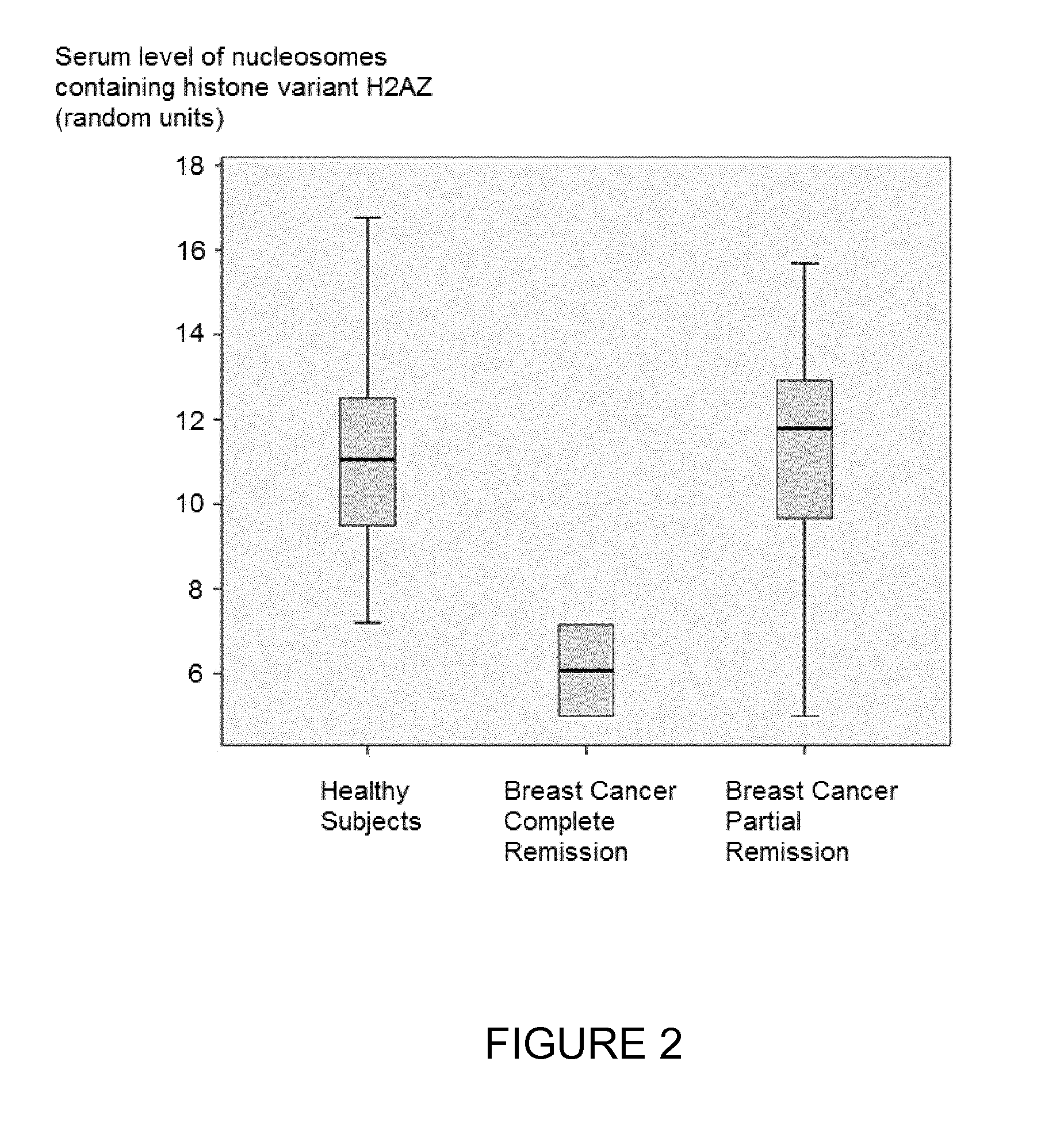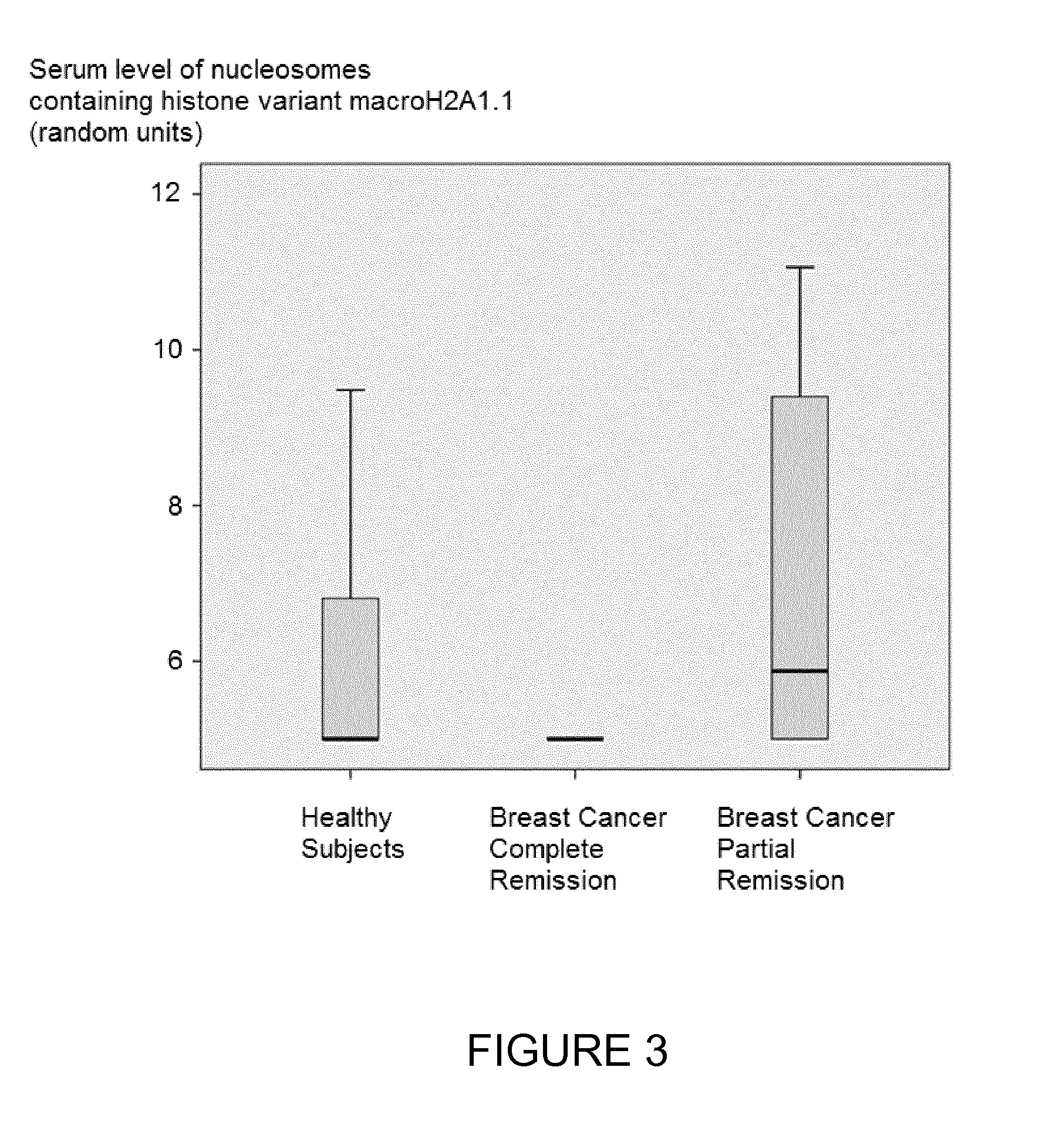Method for predicting therapy efficacy using nucleosome structure biomarkers
a nucleosome structure and biomarker technology, applied in the field of predicting the efficacy of therapeutic treatments, can solve the problems of increased burden, potential promotion of tumor drug resistance, and loss of tumor staging information
- Summary
- Abstract
- Description
- Claims
- Application Information
AI Technical Summary
Benefits of technology
Problems solved by technology
Method used
Image
Examples
example 1
[0159]Serum samples were taken from 9 healthy subjects and 8 subjects diagnosed with breast cancer prior to any therapy. The breast cancer patients were then treated with neoadjuvant therapy prior to surgery for tumour resection. The neoadjuvant therapy resulted in complete remission for 2 of the breast cancer patients but no remission or only partial remission in the other 6 patients. Remission was ascertained on surgery and by histological findings.
[0160]The sera taken from subjects were assayed in duplicate for the level of nucleosomes containing the modified nucleotide 5-methylcytosine, nucleosomes containing the histone variant macroH2A1.1, nucleosomes containing the histone variant H2AZ and nucleosome-HMGB1 adducts using 4 ELISA methods as described below. Neat commercially available horse serum produced for use in tissue culture was also assayed as a negative control sample containing no nucleosomes or nucleosome adducts.
PUM
| Property | Measurement | Unit |
|---|---|---|
| pH | aaaaa | aaaaa |
| pH | aaaaa | aaaaa |
| structural/shape | aaaaa | aaaaa |
Abstract
Description
Claims
Application Information
 Login to View More
Login to View More - R&D
- Intellectual Property
- Life Sciences
- Materials
- Tech Scout
- Unparalleled Data Quality
- Higher Quality Content
- 60% Fewer Hallucinations
Browse by: Latest US Patents, China's latest patents, Technical Efficacy Thesaurus, Application Domain, Technology Topic, Popular Technical Reports.
© 2025 PatSnap. All rights reserved.Legal|Privacy policy|Modern Slavery Act Transparency Statement|Sitemap|About US| Contact US: help@patsnap.com



